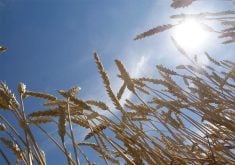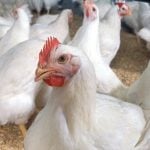A network of weather stations that was launched last summer is expanding.
Weatherbug, a weather information service with its headquarters in Maryland and a network of 8,000 stations in the United States, recently announced that it now intends to install 900 weather stations in Western Canada by 2011.
The stations will augment Environment Canada’s service by providing data from areas not already covered.
The company works with farmers, schools and companies when setting up stations. For example, Bayer Crop Science has committed to develop 600 weather stations on farms and businesses on the Prairies and in British Columbia.
Read Also

Trade war may create Canadian economic opportunities
Canada’s current tariff woes could open chances for long-term economic growth and a stronger Canadian economy, consultant says — It’s happened before.
The response to the weather network, which was originally launched by Weatherbug, the Canadian Wheat Board and Pioneer Grain, has exceeded expectations.
The project partners were hoping to install 600 stations over three years but already have commitments for 900.
“The whole reason we partnered with the Canadian Wheat Board … is because they saw the demand on farm,” said Weatherbug’s Jim Anderson.
“If the closest weather station to you is 50 kilometres away, that’s not really giving you the up-to-the- second information you need, when you are getting ready to make a decision on whether or not you should spray.”
At an April 7 news conference held at the wheat board’s head office in Winnipeg to announce the progress of the weather network, CWB weather analyst Guy Ash said farmers can buy a weather station from Weatherbug and receive precise rainfall and temperature data for their farms.
“Part of the issue here is being able to make better agronomic decisions,” Ash said.
“Whether you are spraying for a particular pest, irrigation scheduling … all these things are critical to the farm today.”
The weather station measures wind speed, wind direction, humidity, precipitation, temperature and dew point. They are solar powered, approximately three metres tall and could fit into a corner of a farmyard.
Farmers not interested in buying a weather station can subscribe to Weatherbug’s hourly forecasts that are sent to their home computers or a Blackberry.















